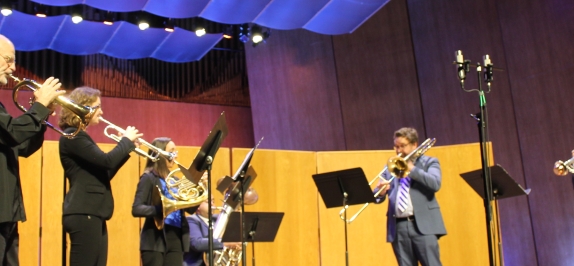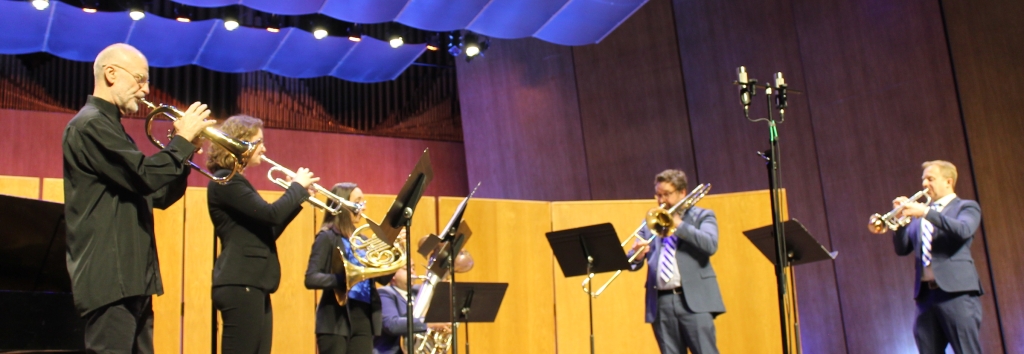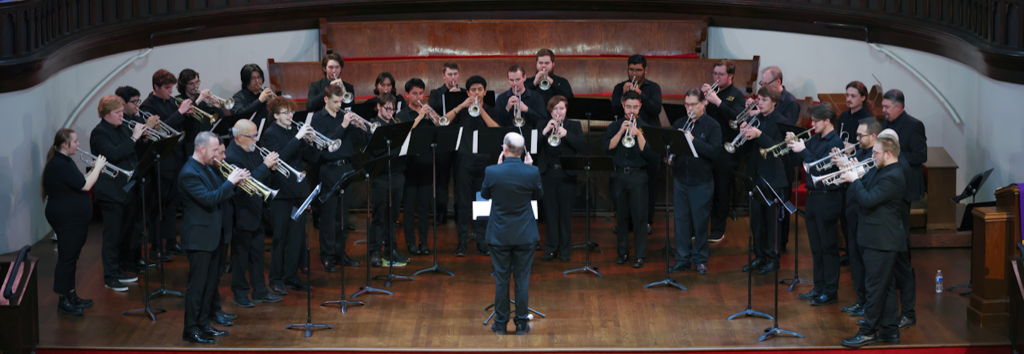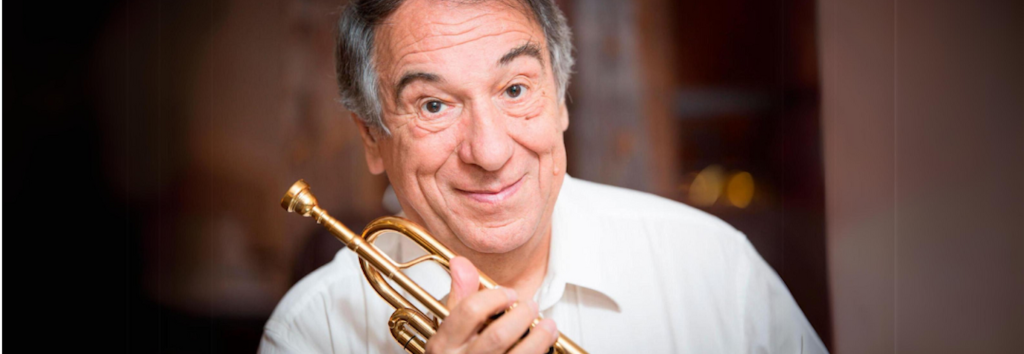
JOIN ITG
Memberships include:
- Four 100+ page ITG Journals
- Unrestricted site access
- Access to members only content
- Annual premium CD or DVD
- Exclusive discounts
- Free extras (music, booklets, etc.)
UPCOMING EVENTS


Sokratis Anthis at the University of Kentucky
Greek trumpeter Sokratis Anthis was a guest artist at the University of Kentucky (UK) March 18–21, 2024.
MORE
Ellsworth Smith International Solo Trumpet Competition Deadline Extension
The International Trumpet Guild is pleased to announce an extension for the 2024 Ellsworth Smith Solo Trumpet Competition. The deadline for registration is now May 15, 2024. Any questions may be directed to [email protected].
MORESusan Slaughter residence at North Carolina School for the Arts
The University of North Carolina School for the Arts hosted Susan Slaughter, recently retired from forty-one years as principal trumpet of the St. Louis Symphony, from October 30 to November 1, 2012. The visit consisted of five separate master classes and individual lessons with students.
 The opening master class was open to the public and streamed live on the Internet on October 30th and can be seen here: http://www.ustream.tv/channel/uncsa-school-of-music. The class opened with the high school trumpet ensemble performing the first two movements of Cityscapes by Winston Salem native Eric Morales. Slaughter and UNCSA faculty artist Judith Saxton then performed two contrasting duets followed by the “Ode to Joy” portion of Beethoven 9. During the class, Slaughter offered a variety of tips for performing, including playing the trumpet with the left hand to work out complex passages or problems. She emphasized, “Don’t keep making the same mistake time after time. Change something.” When coaching the Pines of Rome offstage trumpet solo, Slaughter talked about telling a story for the dead and encouraged performers to approach the excerpt from a position of grief to imitate the idea of the catacombs. She also talked about the various tension and release points of the excerpt and the “three times perfect” rule she uses. When coaching a trumpet section playing Dvorak 9, she talked about knowing when the trumpet is important and when it is not, emphasizing the fanfares throughout the symphony, staying strong in the soft parts of the second movement, and passing off the lines to the strings or english horn when necessary. She entertained a number of questions from the audience and spoke at length about her use of a variety of earplugs during her time with St. Louis.
The opening master class was open to the public and streamed live on the Internet on October 30th and can be seen here: http://www.ustream.tv/channel/uncsa-school-of-music. The class opened with the high school trumpet ensemble performing the first two movements of Cityscapes by Winston Salem native Eric Morales. Slaughter and UNCSA faculty artist Judith Saxton then performed two contrasting duets followed by the “Ode to Joy” portion of Beethoven 9. During the class, Slaughter offered a variety of tips for performing, including playing the trumpet with the left hand to work out complex passages or problems. She emphasized, “Don’t keep making the same mistake time after time. Change something.” When coaching the Pines of Rome offstage trumpet solo, Slaughter talked about telling a story for the dead and encouraged performers to approach the excerpt from a position of grief to imitate the idea of the catacombs. She also talked about the various tension and release points of the excerpt and the “three times perfect” rule she uses. When coaching a trumpet section playing Dvorak 9, she talked about knowing when the trumpet is important and when it is not, emphasizing the fanfares throughout the symphony, staying strong in the soft parts of the second movement, and passing off the lines to the strings or english horn when necessary. She entertained a number of questions from the audience and spoke at length about her use of a variety of earplugs during her time with St. Louis.
In the second master class, Slaughter coached the entire brass section of the Symphonic Brass Repertoire class on Mahler Symphony no. 5. The overarching emphasis of this session was putting oneself in the necessary emotional position to perform this work. Slaughter urged students to imagine tragic events in their own lives to put themselves in the correct mindset of grief and loss. She also instructed performers to play the opening triplets as if they were downbeats instead of pickups and to emphasize the fluchtig in the opening solo and when it recurs.
 During the regular trumpet studio master class time, students played a mock audition judged by Slaughter, Anita Cirba (principal in Winston-Salem Symphony and Greensboro Symphony), Brian French (principal trombone in Winston-Salem Symphony) and Don Tison (former principal trumpet in Baltimore Symphony). Every student played and took notes for discussion. Slaughter spoke about what audition committees look for: consistency in attacks, rhythm and pitch while reiterating that musicality. She emphasized how important it is for players to have clear musical ideas and listen to the excerpts to know what is happening before, during, and after they play. From a technical perspective, she suggested playing both Beethoven Leonore Overtures 2 and 3 in all twelve keys and trying different trumpets for various excerpts. She cited using an e-flat trumpet on the opening of Schumann 2 or the Ballerina’s Dance from Petrouchka. She also suggested trying a flugelhorn mouthpiece or a bag on the bell for the Schumann 2 opening.
During the regular trumpet studio master class time, students played a mock audition judged by Slaughter, Anita Cirba (principal in Winston-Salem Symphony and Greensboro Symphony), Brian French (principal trombone in Winston-Salem Symphony) and Don Tison (former principal trumpet in Baltimore Symphony). Every student played and took notes for discussion. Slaughter spoke about what audition committees look for: consistency in attacks, rhythm and pitch while reiterating that musicality. She emphasized how important it is for players to have clear musical ideas and listen to the excerpts to know what is happening before, during, and after they play. From a technical perspective, she suggested playing both Beethoven Leonore Overtures 2 and 3 in all twelve keys and trying different trumpets for various excerpts. She cited using an e-flat trumpet on the opening of Schumann 2 or the Ballerina’s Dance from Petrouchka. She also suggested trying a flugelhorn mouthpiece or a bag on the bell for the Schumann 2 opening.
Later Slaughter coached student brass quintets and the high school trumpet ensemble. Student groups played Ewald Quintet No. 3, Die Bankelsangerlieder, R. Kevin Paul’s Appalachian Hymn Song, and Malcolm Arnold’s Quintet. She urged groups to grab the audience’s attention and always perform with excitement, discussed musical momentum and emphasized never letting the action stop. She also talked about the importance of figuring out details of why problems occur in rehearsals and working as a group to correct the challenging areas.
In the final master class, the UNCSA students formed trumpet sections and presented section excerpts of Prokofiev’s 5th Symphony, Berlioz’s Symphonie Fantastique and Holst’s The Planets. Slaughter coached these sections, and to demonstrate appropriate styles and volumes, performed the excerpts with Anita Cirba and Judith Saxton. Students sat side-by-side and listened to the excerpts, and they made dramatic changes in their approach. In the slow, foreboding eighth-note section in Prokofiev, Slaughter mentioned an anecdote from a previous conductor requesting that it be played as if they were “skeletons in the closet.” In regards to all the excerpts, Slaughter emphasized playing what is on the page, placing accents in the right spot, exaggerating dynamics, and playing the music as the composer intended.
 Slaughter’s lessons stretched from the technical aspects of trumpet playing to time management and goal setting. She utilized visual aids and shared the various ways she has customized her equipment to fit her and maximize ease and efficiency. She encouraged players by asking first, “Can you do it?” When they responded affirmatively, she followed with, “Will you do it?”
Slaughter’s lessons stretched from the technical aspects of trumpet playing to time management and goal setting. She utilized visual aids and shared the various ways she has customized her equipment to fit her and maximize ease and efficiency. She encouraged players by asking first, “Can you do it?” When they responded affirmatively, she followed with, “Will you do it?”
Source: Judith Saxton
Links:




